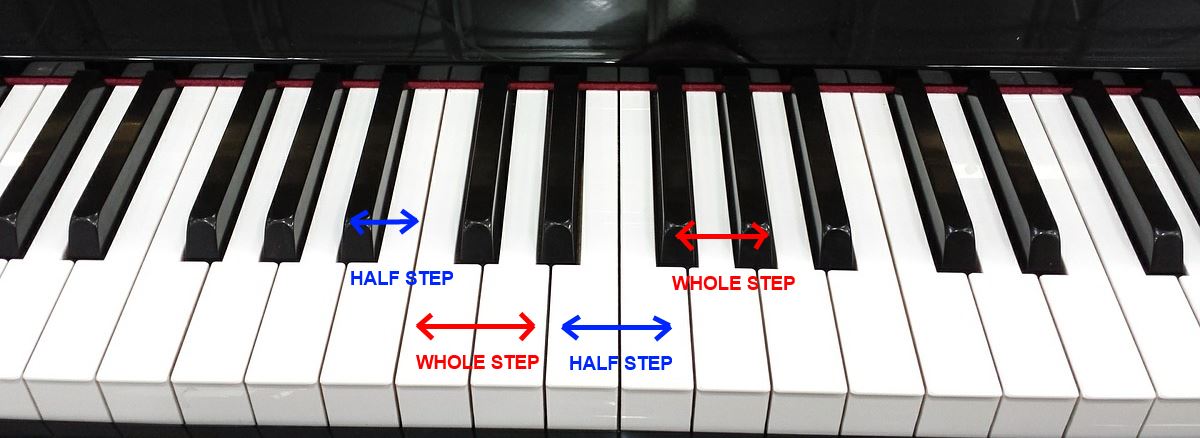How do the keyboard and pedals work?

Before playing piano, you need to understand the layout of a piano keyboard, the horizontal row of keys you use to play the music.
The pedals at the bottom of the piano are also important. I read in several tutorials that these need not be used by beginners, it's false. I used the right pedal since the first week. It helps you to sound like a pro.
Keyboard
Most of the keyboards have 88 keys (sometimes less) with 52 white and 36 black keys. If you look at the layout, you will see a repeating pattern : a group of two black keys then a group of three black keys between the white keys. Remember these groups of black keys because they will help us to find the music notes in a next step.
The keys on your keyboard are arranged from the lowest to highest (from left to right). Pick a white key, play it, and go up (to the right) to the adjacent key (whether black or white) and play it. The distance between the two consecutive keys you have played is called a Half Step.
Continue to go up by Half Step until you reach the last key of the keyboard. You will notice that each time you are on a white key, the adjacent key can be black or white, whereas when you are on a black key, the adjacent key is necessarily white.
Now you have learned what a Half Step is, the definition of a Whole Step is very easy. Moving a Whole Step means you move (up or down) two Half Steps from your starting key. Pick a white key, play it and move to the next white key (on your right for example) and so on. You will notice that most of time, you move a Whole Step. But when there is no black key between two adjacent white keys, you move a Half Step.
But why learning Half Step and Whole Step, whereas I said I will explain only what you need to know to play piano fast ? It is very important because it will help us to learn faster the next steps about notes and chords.
Pedals
You can find two or three pedals at the bottom of your piano. They are played with your foot. As a beginner, you will only use the right one, the sustain pedal (also called damper). The sustain pedal allows all of the notes to resonate after your fingers release the keys, for as long as the pedal is depressed.
The best way to learn how to pedal is to just try it out as you play. Place the ball of your foot on the pedal and the heel on the ground directly in front of the pedal. Your heel should never leave the ground while depressing the pedal. When releasing the pedal, be sure to do so gently.
Summary
You have learned the layout of a piano keyboard and the difference between half steps and whole steps. You know how to use the right pedal to sustain the notes after your fingers release the keys.
At this point, you are ready to explore the notes on the piano.